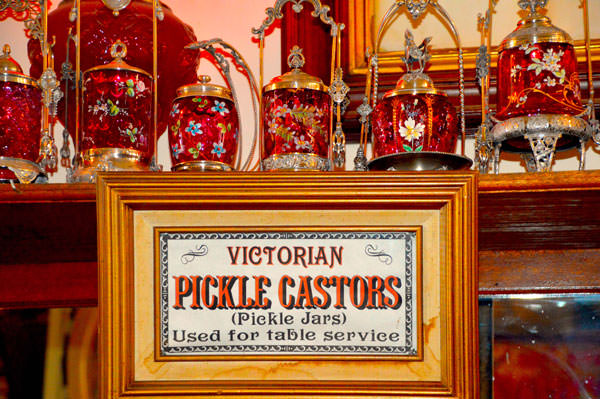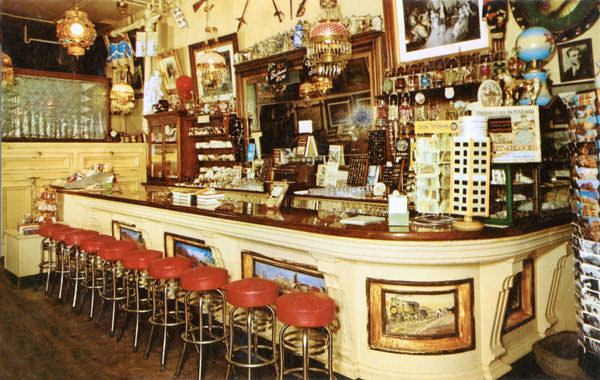Castors at the local tables of yore.
Maybe you’ve noticed them in antique stores or in a period drama. A jar, maybe six inches tall and made of pressed glass sits like a jewel, encased in an ornate holder with decorated tongs. If so, you’ve discovered the world of Victorian-era pickle castors.
So how did the humble pickle end up in such an elaborate container? Pickles have been around for thousands of years as a preserved food that adds interest to bland diets. Leave it to the Victorians, though, to elevate a practical holder for pickles and relishes to an art form.
As was common among the wealthy in the 19th century, the castors were part of a dining table on which every course and food item warranted its own utensil.
“Not only did pickle castors convey status, they connoted one’s power to have servants. Household kitchen staff was responsible for preparing and preserving the jar’s contents, then using it to display the fruits of their labor,” comments the online publication Atlas Obscura.
Coming to America
The well to do in America took notice. Although the trend diminished after Queen Victoria’s death, it remained popular on American tables. The metal frames and tongs were made throughout New England, with the most valuable being silver but the majority made of pot metal. The glass inserts primarily were manufactured in Ohio. Prices for originals averaged from about $1 to a high of around $10. In 1908, Sears Roebuck retailed a pressed-glass insert in a triple-plated frame for $1.10.
While the cucumber mostly is associated with pickles today, in the 19th century, many vegetables and fruits were preserved through pickling. Cookbooks from the last half of that period were filled with pickle recipes. The 1861 landmark publication Mrs. Beeton’s Cookery Book contained instructions for pickling lemons, onions, nasturtiums, and walnuts. Mrs. Chadwick’s Cook Book, published in 1853 in Boston, included recipes for watermelon and mush melon rinds.

A color postcard of Virginia City’s landmark Bucket of Blood Saloon, circa 1950s, with castors flanking the mirror
Castors shine in Nevada’s Virginia City
Bucket of Blood Saloon is worth a visit at any time, but its collection of pickle castors dating from 1860 to 1915 is particularly noteworthy. Owner Don McBride assembled the items, searching for them at auctions as far away as Ohio. Jeffrey Teague, former owner of the Cobb Mansion Bed & Breakfast in Virginia City, describes how his father, Reginald, traveled from Connecticut to Ohio, only to outbid McBride for a lot of 200 castors.
In a strange coincidence, years later, Jeffrey hosted a dinner for his parents, who were visiting from Connecticut, as well as Senator Richard Bryan and his wife, plus his neighbors, the McBrides. During the course of the evening, a conversation between Reginald and McBride revealed that they had bid against each other at that same estate sale in Ohio years before. As Jeffrey recalled, “After lots of laughter and discussion, we came to the realization that the world is really a very small place indeed.”
Revival in 1980s
Collectors took a renewed interest in Victorian glass art, including pickle castors, in the mid-1980s. This long-forgotten serving piece now is a highly collectible art form and a wonderful way to remember the graciousness of those earlier times. Their affordability helps. While a standard castor can be purchased today for less than $100, the rarest of jars sells for as much as $1,500 — enough to buy a lot of gherkins!
Sharon Honig-Bear was the longtime restaurant writer for the Reno Gazette-Journal. She relishes Reno history and is a tour leader with Historic Reno Preservation Society. You can reach her with comments and story suggestions at Sharonbear@sbcglobal.net.


